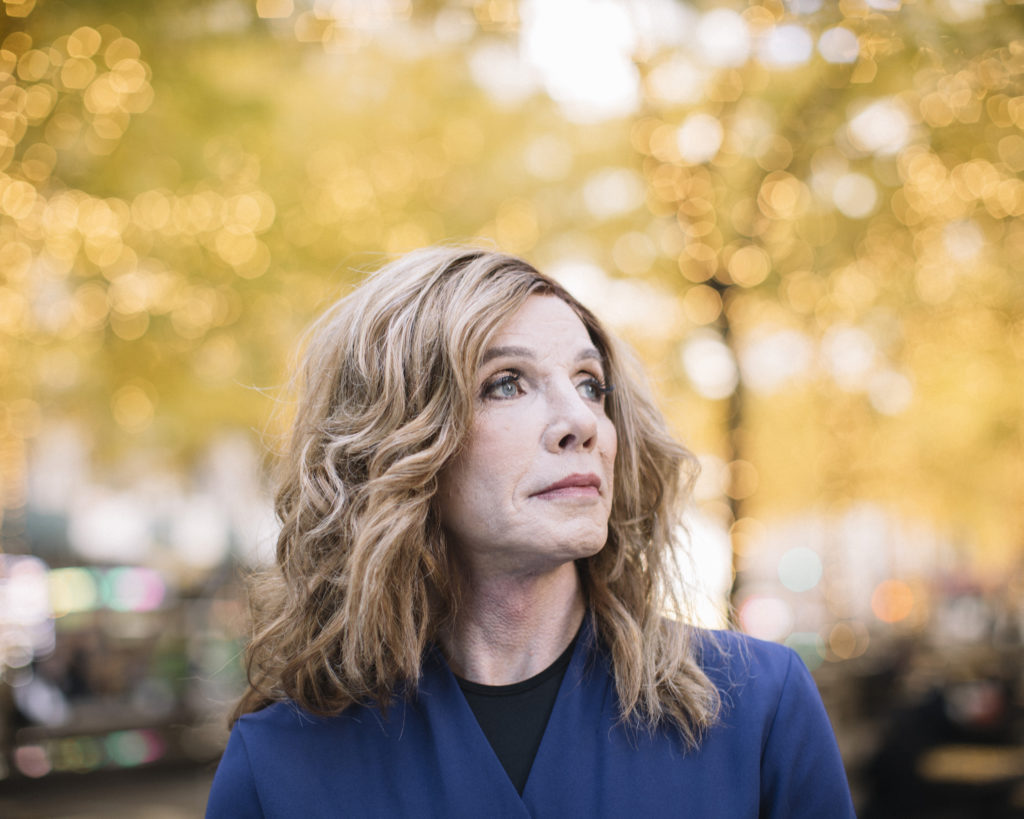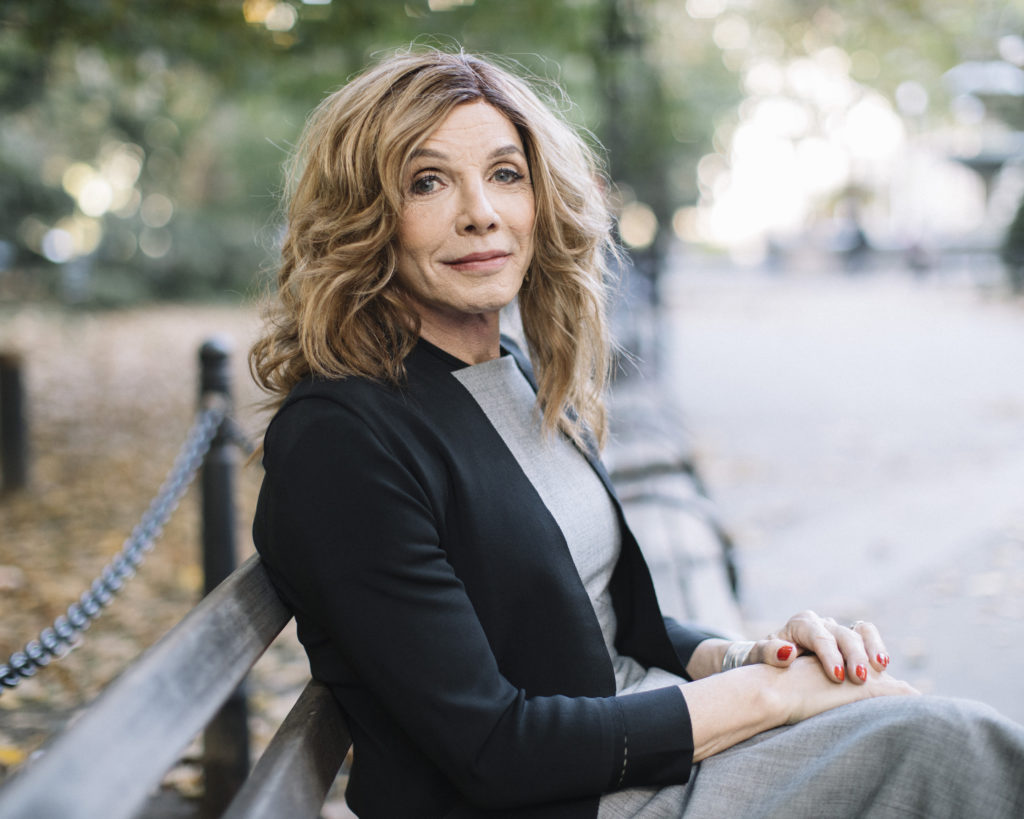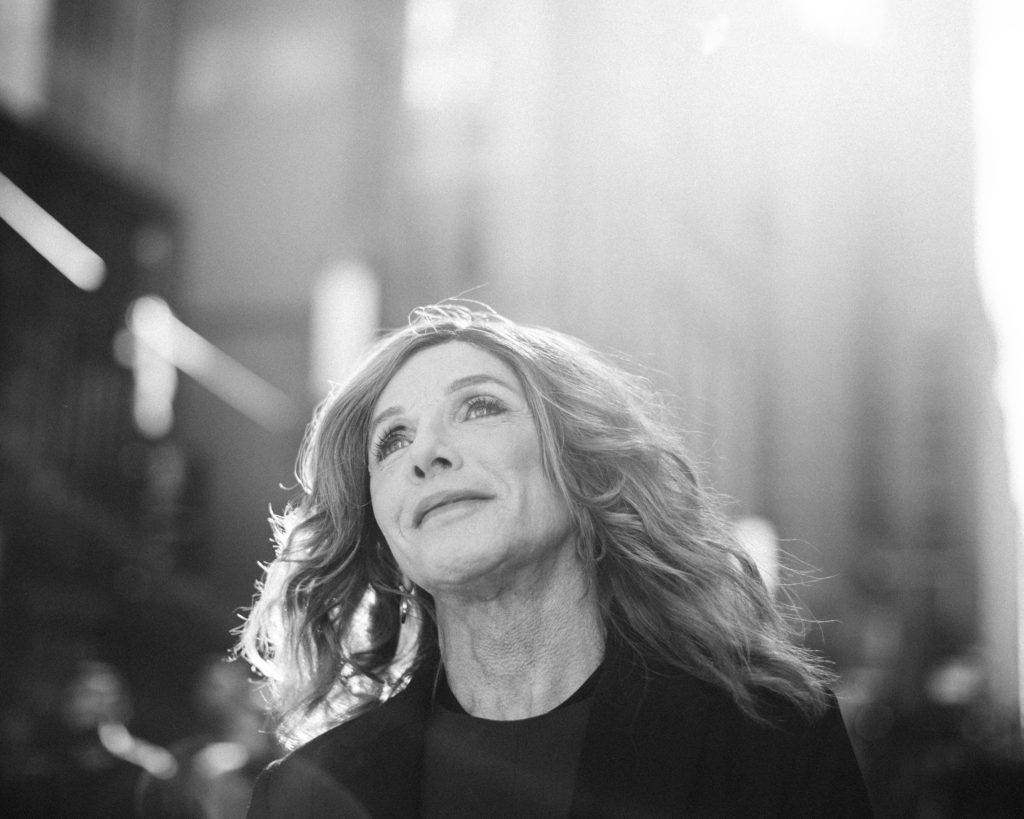Dr. Sheila Grace Newsom on Coming Out as Transgender in Her Sixties
December 14, 2018 | Filed in: Woman of the Week
Sheila Grace Newsom, born and raised as Gary Don Newsom in a corn-fed Texas town in the 1950s, always felt that something wasn’t quite right. But she managed to push it aside for decades, living as a man while attending West Point, serving in the army, becoming a successful physician, and raising a family. Then, in her sixties, Sheila experienced an awakening: She was a woman, and always had been. Sheila visited MM’s offices in November during Transgender Awareness Week, a time of special significance to her, particularly as November 20th is dedicated to members of the community who have lost their lives due to anti-transgender violence. Here, she talks about her life before and after the transition process, the “fun” parts of becoming female, and how she managed to push through her darkest moments. She has also written a memoir, A Calling From the Bones, and is working on a documentary about her experience.

Sheila wears the Niko dress.
I GREW UP IN A TOWN IN WEST TEXAS called Big Spring. It was a thriving community with an Air Force base, and I had a very comfortable upbringing. My father owned the local grocery store, and that was where people congregated. My mother sang in the choir at the Methodist church. It was a very wholesome, American childhood. I was the captain of the football team and well-liked at school. My best friends were mostly girls—I always related deeply to the feminine in that way.
WHEN I READ ABOUT WEST POINT, I said, “Wow, that looks hard. I want to be there.” Joining the army seemed like something important and gratifying to do. And once I got there, I loved the ritual of it. I was learning to be a warrior, and I devoted myself to that.
I THINK THERE ARE THREE MAJOR QUESTIONS that we have to answer in our lives: Who we are, what we are, and how we serve. Sometimes what you are and how you serve may alter who you are at a deep level. That ethos of service, which I tapped into at West Point, gave me a purpose. After I graduated, I was in the army for five years and went overseas as a paratrooper. I flew all over Europe, jumping out of airplanes. I dated some people over there. I had some very intense moments of confusing feelings, but I had no idea about gender fluidity or what gender even meant. Back then, you were assigned your gender at birth, and you had no language for any feelings to the contrary. Now, it’s great that young people have more opportunities to explore it.

Sheila wears the Shanna dress and the Sant Ambroeus jardigan.
WHEN I WAS 27, I APPLIED TO MEDICAL SCHOOL. I also met my wife and we got married. The field of nephrology, which is the study of the kidneys, attracted me because you really get to be in the trenches with people. It made me feel like I was a warrior again. But there was a pressure building up inside me. In the first year I was in practice, another doctor gave me some Chivas Regal at our office Christmas party. The way that I felt after that one drink changed everything. I went and bought a bottle of Chivas Regal, and for the next four or five years, I drank heavily.
I DIDN’T THINK MY DRINKING WAS A REAL PROBLEM until I went to the Rose Bowl with a group of guys and one of them told me about how he got sober. By that time I was out of control: I was doing cocaine and had a girlfriend on the side. At the end of my return flight, I realized that I could either go and buy more cocaine, or I could go home. So I drove home, sat down with my wife, and said, “Listen, I’m an alcoholic. I need to go to treatment.” And she said, “Well, I’m glad that you’ve come to this realization. I was going to leave within the next two weeks.” I went to a facility specifically for recovering physicians, in Atlanta. I mopped floors and served meals at a mission downtown. That six months of treatment saved my life. That was in 1993, and I’ve been sober ever since.
AFTER I GOT SOBER, I BEGAN TO BLOSSOM as a physician. I think I became better with patients because I had more compassion. I teamed up with another physician to build a dialysis center in Midland, Texas, and I commuted back and forth from there to Austin, where my family lived. In the midst of that, I started going to Uganda for medical missions, and I fell in love with the people and the work. I went back a bunch of times, and my wife and I put together a nonprofit and helped raise money to build a new wing on a hospital there.

Sheila wears the Shirley dress and the Cheryl jacket.
WHEN WE SOLD THE DIALYSIS CENTER IN 2011 I wasn’t ready to retire, so I put together a business in Uganda that made supplements from local grains to increase the protein intake in the local population. I went over there quite a bit and put my heart and soul into it, as well as a lot of money. Then, after being out of touch for several weeks, my business partner called me in the middle of the night and told me that he was running for parliament in Uganda. He had taken the money that I’d invested in the company and used it for his campaign. I lost everything I’d put in.
AFTER THE COMPANY COLLAPSED, my wife and I took a vacation to Nevis in the West Indies. I was sitting on the porch looking out at the ocean, and I felt this overwhelming sensation. A voice said to me, “You are a woman. You always have been, always will be.” I had no idea what that meant. I wondered, “Am I a cross-dresser? Am I gay?” I just didn’t know, and as a result, I didn’t communicate it very well. It was awkward, like being a teenager—very clumsy. A few weeks later, I went to a board meeting at West Point, and someone there mentioned a transgender woman who had been a Navy SEAL. She had produced a documentary, called Lady Valor, so I went and watched it. It just hit me in the face. I sat there and sobbed, because I suddenly knew what I had to do. That’s when I began to move forward with my transition.
THERE WAS A LOT OF RESISTANCE and confusion from my wife and family at the beginning, so I hid my transition from them. I learned how to use makeup, and even though I wouldn’t go out as a woman, I began to sense myself in that way. In 2015, my wife said, “I can’t do this anymore.” I understood that. At that point, I thought about committing suicide, because I couldn’t see any other way through. I went back down to Nevis and figured I wasn’t coming back. But while I was there, I heard that voice again: “You can’t give up like this. Other people need you to help them. You need to get through this.” So I came back to Texas and I committed to my transition, as well as helping others who were going through the same thing.

Sheila wears the Niko dress and the Laurel bracelet.
I CAME OUT MORE OFFICIALLY AT THE BEGINNING OF 2018, and it has taken its toll on some of my relationships. I wrote to about 10 of my classmates at West Point who have been supportive friends throughout my life. One of them is a former Governor; another is a CEO of an international corporation. I wrote long letters, saying, “This is where I’ve been, and this is what I’ve done.” A couple of them just never responded. Others sent curt responses. These are people who I would normally speak with every couple of weeks.
THE HARDEST PART OF THIS PROCESS has been that it’s difficult for my family. I was a good father and husband, and close to my girls. I moved out of our home in 2017. Grieving that, and helping my daughters to grieve the loss of a father figure, has been the darkest part of this. My oldest got married in May, and it was bittersweet in that all of us knew it was the last time they’d see me as “Dad.” There has not been anything simple about doing this late in life. But I didn’t have any other choice.
I STARTED VOLUNTEERING AT A CLINIC that gives free care to transgender patients here in Austin. Every week, I get to see new patients and start them on hormones. For me, hormones were a godsend—my suicidal thoughts ended, and my dysphoria settled immediately. To provide comfort to people as they work through their confusion and trauma keeps me grounded. Our common condition is a discrepancy between who we are inside versus who we appear to be on the outside. Unless you’ve experienced that, it’s hard to explain.

Sheila wears the Shanna dress and Sant Ambroeus jardigan.
PEOPLE HAVE MADE THIS ISSUE POLITICAL, and moral, and it’s not. I don’t know if the need to transition is biological, or genetic, or emotional, or spiritual—I think it’s all of those things. But it’s a change in consciousness, and I’m here now to educate others about it. That’s why I wrote a book, and that’s why I’m making a documentary with the director Richard Linklater. I’m going to West Point to talk to a group of cadets about what this journey has been like. I’m trying to show the world that this is not a character defect. I think it’s a pilgrimage, I really do.
WHEN I BEGAN TO LIVE AS A WOMAN FULL TIME, every time I’d walk out the door, I’d say to myself, “Sheila, this is an act of courage. Whatever happens to you, you’re living your truth.” MM.LaFleur was an important part of being out in the world as a woman. I didn’t have a wardrobe at all, let alone a professional one, and I didn’t have a lot of folks to help me put one together, so MM.LaFleur’s stylists were very helpful. Now, it’s fun to get dressed up and put on makeup, to be seen as the woman I feel like on the inside. I had facial feminization surgery in Boston in September, and I have a few more surgeries coming up. They’re extensive operations, but the bottom line is, now I look like me.
ANOTHER WONDERFUL PART OF THIS PROCESS is that I’ve found some female friends who I connect with on a deep, emotional level. Being a friend as a transgender woman feels completely different than the friendships I experienced from a masculine standpoint. I feel so natural in that environment. And now, with the clothes and all, I feel like I’m home.

Sheila wears the Shirley dress and the Cheryl jacket.
Photographs by Rich Gilligan. Styling by Nyjerah Cunningham.





